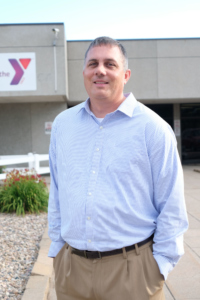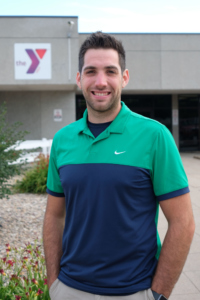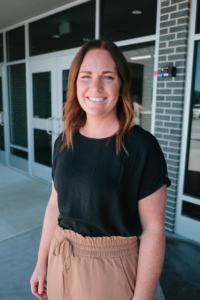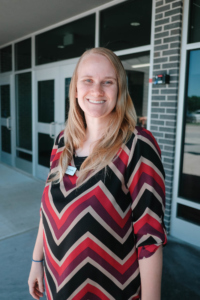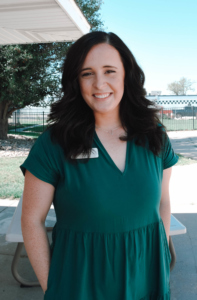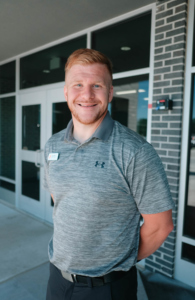The Hastings Y has a rich history, which began in 1881, as one of the first YMCAs in the state of Nebraska. Our first location consisted of two upstairs rooms in downtown Hastings, and membership was open only to men. A two-story brick facility was built at 214 North Lincoln in 1885, and later renovated in 1925.
Women joined our ranks in the 1950s, paving the way for many new activities. Our 16th Street location was opened in 1980, and in 2005, we merged with Champions Sports & Recreation, and our 18th Street Y location was realized.
The Hastings Y has undergone enormous change throughout the years, but our mission of improving the quality of life in our community through good health, confident kids, and strong families remains the same. We accomplish this through a wide variety of programs and activities devoted to youth development, healthy living, and social responsibility.
- Mission Statement
- History
- Leadership Team
- Board of Directors
- Facilities
- Non-Discrimination Policy
- Strategic Plan
To put Christian principles into practice through programs that build healthy spirit, mind and body for all.
George Williams founded the YMCA in 1844.
In 1844, industrialized London was a place of great turmoil and despair. For the young men who migrated to the city from rural areas to find jobs, London offered a bleak landscape of tenement housing and dangerous influences.
Twenty-two-year-old George Williams, a farmer-turned-department store worker, was troubled by what he saw. He joined 11 friends to organize the first Young Men’s Christian Association (YMCA), a refuge of Bible study and prayer for young men seeking escape from the hazards of life on the streets.
Although an association of young men meeting around a common purpose was nothing new, the Y offered something unique for its time. The organization’s drive to meet social need in the community was compelling, and its openness to members crossed the rigid lines separating English social classes.
Years later, retired Boston sea captain Thomas Valentine Sullivan, working as a marine missionary, noticed a similar need to create a safe “home away from home” for sailors and merchants. Inspired by the stories of the Y in England, he led the formation of the first U.S. YMCA at the Old South Church in Boston on December 29, 1851.
- In 1844, George Williams launched the YMCA movement in London as a volunteer, and his example persists in the expansion of the Y across the globe. In the United States, early YMCA programs were run almost entirely by volunteers.
- The first “student YMCA” was started in 1856 at Cumberland University in Lebanon, Tenn. Dedicated to the leadership development of college students, student Ys remain active on the campuses of major universities such as the University of Illinois.
- In 1853, the first YMCA for blacks was founded by Anthony Bowen, a freed slave, in Washington, D.C.
- Welcoming and engaging newcomers and immigrants has always been part of YMCA work. In 1856, the nation’s first-known English as a Second Language (ESL) class was held for German immigrants at the Cincinnati YMCA.
- YMCA housing began in the 1860s to give young men moving to cities from rural areas safe and affordable lodging. Facilities included gyms, auditoriums and hotel-like rooms. Chicago’s Farwell Hall, the first known YMCA dormitory, was completed in 1867. Between 1922 and 1940, YMCA accommodations grew from approximately 55,000 rooms to more than 100,000, more than any hotel chain at the time. Among those who stayed at YMCA residences: journalists Andy Rooney and Dan Rather, black leaders Malcolm X and Dr. Martin Luther King Jr., novelist Jack Kerouac, and U.S. Ambassador Andrew Young.
- In 1861, a conference with President Abraham Lincoln led to the full-scale recruitment of YMCA volunteers. Eventually numbering 5,000, members of the U.S. Christian Commission served as surgeons, nurses and chaplains during the Civil War. The volunteers distributed medical supplies, food and clothing, and taught soldiers to read and write.
- The first YMCA buildings constructed with gymnasiums opened in 1869. In 1881, Boston YMCA staffer Robert J. Roberts coined the term “body building” and developed exercise classes that anticipated today’s fitness workouts.
- In 1872, the first Railroad YMCA was organized in Cleveland as a partnership between the YMCA and railroad companies to provide wholesome overnight lodging and meeting space for railroad workers.
- In San Francisco, YMCAs serving Asians were established in 1875 to serve the large Chinese population there, and a Japanese YMCA was founded in 1917. U.S. Native American Ys started in 1879 with the founding of a YMCA by Thomas Wakeman, a Dakota Indian, in Flandreau, S.D.
- Camping became a cornerstone of YMCA programming in 1885 when the YMCA started Camp Dudley, America’s first known summer camp program, at Orange Lake, N.Y. The longest continually operating camp, its aim was to provide children with a positive developmental experience through making new friends, building confidence and growing in self-reliance.
- Designed to promote Christian character through fostering speech, sportsmanship and scholastic achievement, the Chapman, Kansas YMCA developed the Hi-Y club for high-school boys in 1889. The service clubs ultimately became the “four fronts” program—Hi-Y, Jr. Hi-Y, Tri Hi-Y, and Gra-Y—and served youth of all ages.
- Founded in 1889, YMCA World Service raised awareness of and financial support for the powerful work of the global YMCA movement. Between 2000 and 2010, more than $10 million was raised to fund programs designed to empower youth and adults with the resources to create a better future for themselves and their families.
- In the 1890s, YMCA instructor William Morgan thought basketball was too strenuous for businessmen, so he blended elements of basketball, tennis and handball, and called his invention “mintonette.” In 1896, at the International YMCA Training School in Springfield, Mass., the name “volley ball” was first used to describe the back-and-forth manner in which the ball flew over the net. Today, more than 46 million Americans play volleyball.
- In December 1891, at the International YMCA Training School in Springfield, Mass., the school’s director, Dr. Luther Gulick, gave physical education teacher James Naismith two weeks to come up with an indoor winter game to challenge a class of future Y directors. Naismith hung peach baskets to the bottom of a second-level running track and taught the men his new game: basketball. Today, basketball is second only to soccer as the most popular sport in the world.
- Early YMCAs created a number of programs to make vocational and higher education available to more people, especially working-class Americans. In 1893, large-scale evening classes began at the Boston YMCA, offering liberal arts and vocational courses. By 1950, YMCAs operated 20 colleges in cities across the country, and many of these YMCA-founded schools became freestanding institutions of higher learning.
- In 1903, the YMCA created an “industrial” department to work with railroad workers, miners and lumbermen, and to assist immigrants. Today, YMCAs respond to changing demographics through refugee services, welcome centers, adult education classes and more.
- In answer to a YMCA campaign “to teach every man and boy in North America” to swim, George Corsan arrived at the Detroit YMCA in 1909 to teach swimming using radical new methods: group swimming lessons and lessons on land as a confidence builder. In Newark, N.J., alone, he taught 800 boys to swim in just four weeks.
- In 1910, 25 black YMCAs were built in 23 cities as a result of a challenge grant program announced by Sears Roebuck founder Julius Rosenwald. The Ys included clean, safe dorm rooms and eating facilities, which were a boon to black travelers, especially servicemen, in a segregated and discriminatory era.
- Swimming classes expanded throughout the century to include families and people with disabilities. In addition to helping youth feel safe around water, swim activities develop kids’ problem-solving abilities and bolster their self-esteem.
- Throughout World War I, the YMCA provided morale and welfare services for the military. By war’s end, the YMCA, through the United War Work Council, had operated 1,500 canteens in the United States and France; set up 4,000 YMCA huts for recreation and religious services; and raised more than $235 million—equivalent to $4.3 billion today—for relief work.
- In 1926, YMCAs made a commitment to families when the parent-child program Y-Indian Guides began at the St. Louis YMCA. Started by Harold J. Keltner and Joe Friday, a member of the Ojibway tribe, the program was based on the Native-American family model and sought to foster the companionship of father and son. The program later expanded to include father-daughter (Y-Indian Princess), mother-son, mother-daughter (Y-Indian Maiden) and parent-preschooler components.
- Sponsored by the New York State YMCA, the YMCA Youth & Government program began in Albany in 1936. The program encourages high school students to understand the processes of government and to prepare to participate in it.
- During World War II the YMCA, along with five other national voluntary organizations, founded the United Service Organizations for National Defense, today known as the USO.
- Also during World War II, YMCA staff worked secretly in U.S. internment camps holding 110,000 Japanese Americans, organizing clubs and activities for the children.
- In 1950, YMCA volunteer Joe Sobek invented racquetball in Greenwich, Conn., as an alternative to squash and handball. Like previous YMCA inventors, Sobek was not paid for his invention; he bestowed it as a gift to all who play the game today.
- From 1956 to 1966, the YMCA Building for Brotherhood campaign raised more than $5.5 million to strengthen the infrastructure of many YMCA national organizations and established a YMCA presence in several countries around the world.
- Motivating African-American teens to academic and career success was the goal of a Black Achievers program conceived in 1967 by Quentin Mease at the South Central YMCA in Houston, Texas. In 1971, financial consultant Dr. Leo B. Marsh at the Harlem Branch YMCA (N.Y.) initiated the Black Achievers format we know today: a volunteer adult mentoring model that helps youth to raise their academic standards and develop a positive sense of self. The program later expanded to support all teens of color.
- Many black YMCAs became meeting places and rallying points for the Civil Rights movement. In 1967, racial discrimination was banned in all YMCAs.
- YMCA of the USA first began work on public policy issues in the late 1970s, forming the Government Relations and Public Policy Office in the nation’s capital in 1991. The office champions the YMCA mission with lawmakers and federal and state government officials. The office also works with YMCAs and state alliances to strengthen their government relations efforts, helping them advocate for the kids, families and communities they serve and deepening their influence in state capitols. Every state alliance now engages in a variety of important issues impacting YMCAs and their communities.
- In the mid 1970s, the national YMCA and the NBA Players Association created the Youth Basketball Association (YBA) to organize youth into recreational sports programs that stress skills and teamwork over winning at any cost. The National YMCA Swimming and Diving Championship, originally started in 1922, became the world’s largest swimming championship with 1,500 participants.
- To encourage the healthy development of youth, YMCAs conducted the first national Healthy Kids Day in 1992, the nation’s largest health day for kids and families. Free and open to the public, it became an annual April event, designed to emphasize the importance of play in keeping kids healthy and happy and enhancing their problem-solving abilities, creativity, and motor and social skills.
- In 1994, celebrating a rich history in character development, the YMCA movement defined character as the demonstration of four core values: caring, honesty, respect and responsibility. YMCA staff intentionally modeled the values with children, youth, and adult members and volunteers.
- During YMCA Service meetings held in 1996 and 1997, YMCAs voiced their desire to have YMCA of the USA secure corporate alliances on behalf of the movement. Sponsorship allows Ys to share their mission and stories with the American public with an intensity they could not achieve on their own, increasing individual and corporate fundraising, membership and volunteer efforts.
- Although YMCAs have been engaged in the arts from their earliest days, YMCA of the USA formally established arts and humanities as a national program in 1998, spotlighting the importance of arts to the development of a young person’s imagination, critical thinking, communication and social skills.
- In the 1980s and '90s baby boomers with families became more prominent as members and Ys responded by creating specific programs like family swims and family nights; providing families with opportunities to play, interact and have fun.
- On Saturday, June 2, 2001, 1,200 YMCAs hosted 700 YMCA World’s Largest Run™ events from Maine to Hawaii in the country’s first synchronized run/walk across all U.S. time zones. The event celebrated the 150th anniversary of America's YMCAs and highlighted the importance of physical activity for kids and parents. Over 15,000 volunteers and 54,000 youth and adults participated with proceeds benefiting local YMCA programs.
- The YMCA responded to several world crises—Sept. 11 (2001), Pacific Rim tsunami (2004), Hurricane Katrina (2005) and the earthquake in Haiti (2010)—through fundraising, rebuilding efforts and programs designed to rekindle hope in the affected communities, particularly among children and young people.
- In 2002, YMCA of the USA created the National Diversity Initiative to support the YMCA movement in valuing the diversity of all people within its associations and the communities it serves.
- In July 2004 before a U.S. Senate hearing, Y-USA launched Activate America and the Healthy Community work, beginning a partnership with the Centers for Disease Control and Prevention (CDC). Healthy Communities spreads to more than 150 YMCA communities engaging millions of people in making the healthy choice the easy choice.
- In 2008, with support from Lumina Foundation for Education, YMCAs added College Goal Sunday to their educational programs for youth, which helps low-income, at-risk or non-traditional students with the financial aid process; one of the most significant obstacles to college access and success.
- YMCA Healthy Family Home (HFH), a partnership between the YMCA and Eli Lilly and Company, launched in 2008 to inspire families to make healthier lifestyle choices in homes nationwide. From child care to health fairs, staff meetings to sports fields, YMCAs offer easy, creative ways to help families embrace HFH’s three key concepts: play every day to become more active, eat healthy and spend family time together.
- In 2008, the Armed Services YMCA and YMCA of the USA partnered with the Department of Defense in the YMCA Military Outreach Initiative, which funds memberships and child care services for families facing the hardship of military deployment.
- Positioning the YMCA as an important partner in preventing chronic disease throughout the nation, Y-USA garners the support of high-ranking government officials. In 2010, First Lady Michelle Obama chose the YMCA as the venue to launch the pillars of her “Let’s Move” campaign against childhood obesity.
- Beyond the United States, the YMCA today plays an instrumental role in promoting competition around the world through the Far Eastern Games, Pan American Games and the Inter-Allied Games.
- In 2010, the Y revitalized its brand and began officially referring to itself by its most familiar name – the Y – for the first time.
- Positioning the YMCA as an important partner in preventing chronic disease throughout the nation, Y-USA garners the support of high-ranking government officials. In 2010, first lady Michelle Obama chose the YMCA as the venue to launch the pillars of her “Let’s Move” campaign against childhood obesity.
- To address the growing diabetes epidemic, the YMCA’s Diabetes Prevention Program officially begins expansion in 2010. Part of the CDC-led National Diabetes Prevention Program, the program is part of a new health care delivery system that values prevention efforts offered in a community setting. The first signature program at the Y, DPP helps participants lose weight and increase physical activity with the ultimate goal of preventing new cases of type 2 diabetes.
- YMCA of the USA makes a commitment in 2011 to the Partnership for a Healthier America (PHA) to help end the childhood obesity epidemic. All YMCA’s will adopt a set of Healthy Eating and Physical Activity (HEPA) standards in all its before and after school programming.
- To help end childhood hunger during the summer, the Y and the Walmart Foundation serve more than 7 million meals and snacks to 70,000 children when school is out of session, beginning 2011.
- Togetherhood, the Y’s signature program for social responsibility, makes its debut in 2014. The member-led community service program encourages Y members to find projects to improve their neighborhoods.
- In 2015, Kevin Washington takes over as the 14th President and CEO of YMCA of the USA, becoming the first African-American to hold the position.
|
Troy Stickels CEO |
Ty LeBar |
Christine Bischoff |
|
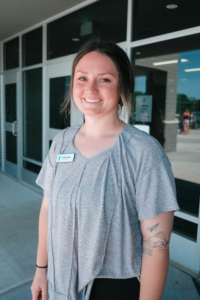 Zandra Golter Health & Wellness Director health@hastingsymca.net |
|
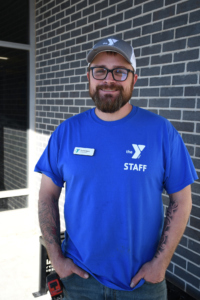 Travis James Travis JamesFacility Director maintenance@hastingymca.net |
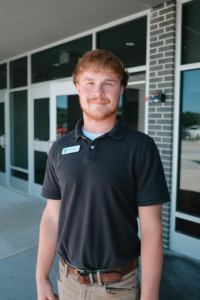 Blake Bonifas Membership Coordinator membership@hastingsymca.net |
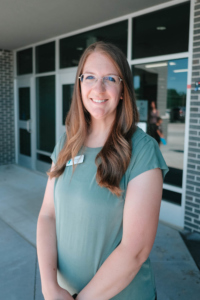 Brandi Skalka STEM Coordinator STEM@hastingsymca.net |
|
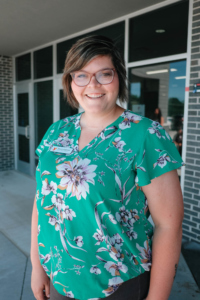 Alyssa Zulkoski Lincoln Elementary After School Coordinator lincolncoordinator@hastingsymca.net |
Kaitlin Anderson After School Coordinator kaitlina@hastingsymca.net |
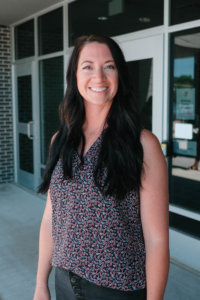 Ashley Arneson Preschool Coordinator preschool@hastingsymca.net |
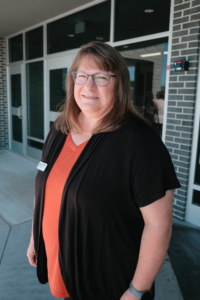 Rita Bankson Administrative Assistant ritab@hastingsymca.net |
NaTosha Halm Child Watch Coordinator Childwatch@hastingsymca.net |
| Cortney Davis President |
Mark Canada Vice President |
Shannon Frink Past President |
Michael Mertens Secretary/Treasurer |
| Cassie Baldwin | Russ Kulwicki | Julie Parker | Tom Ratzlaff |
| Ashley Englund | Pam Lay | Christian Perez | Marv Schultes |
| Raul Franco | Kaye Light | Nikki Pfeil | Sherrie Snodgrass |
| Stephen Illingsworth | |||
FEATURES AND LOCATIONS
The Hastings Family YMCA features a wide range of amenities suited to meet the needs of all ages. Here is a list of what we have to offer.
1430 West 16th Street
|
Non-Discrimination Policy
The Hastings Family YMCA embraces inclusiveness, diversity and equal opportunity as core values. We understand that the community is stronger when the gifts of all people are respected, embraced and maximized to build a healthier community. Other core values that help define who we are as an organization, and how we do business are: caring, approachable, dynamic, innovative, inspiring, ethical, results-oriented. In support of our core values, the Hastings Family YMCA shall, without regard to race, creed, color, gender, national origin, age, sexual orientation, marital status or ability, include and not omit all otherwise qualified persons to its facility, programs, staff, and Board of Directors.
HASTINGS YMCA STRATEGIC PLAN
The Hastings YMCA believes that everyone deserves a chance to succeed-no matter their background or income – and we have learned that can happen only when we unite to nurture the best in all of us. That is why our cause is strengthening community through youth development, healthy living, and social responsibility.
OUR MISSION To put Christian principles into practice through programs that build a healthy spirit, mind and body for all.
OUR VALUES Our core values of caring, honesty, respect and responsibility will guide our behaviors.
OUR AREAS OF FOCUS
- Youth Development: Nurturing the potential of every child and teen for a path of success.
- Healthy Living: Improving the health and well-being through partnerships with health care.
- Social Responsibility: Foster a greater sense of engagement to provide support to our neighbors.
KEY STRATEGIES:
Strategy 1: Improve member engagement
Improve members retention rates by 6% by 2024
Strategy 2: Be a recognized factor in improving the levels of health in our community
Improve levels of health by 5%.
Strategy 3: Increase utilization of the swimming pool
Increase number of swim participants by 200 and aquatic net revenue by $1,000.
Strategy 4: Grow in facility usage
Increase levels of facility use by 25%.
Strategy 5: Increase participation of senior population
Increase level of senior participation by 10% and growth in net revenue of $2,500.
Strategy 6: Growth in programs/services available and utilized by teens
Increase number of youth served by offering 2 new programs annually for the next 3 years reaching 200 additional youth.


